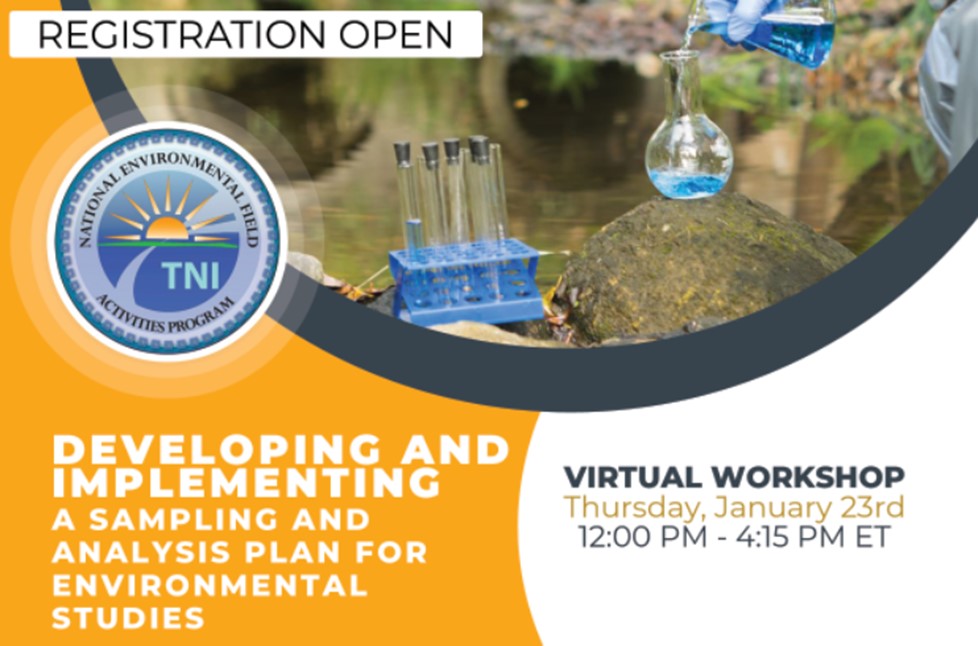
Welcome to Developing and Implementing a Sampling and Analysis Plan for Environmental Studies
In order to obtain environmental data for reliable decision making, a project should have a Sampling and Analysis Plan (SAP) that translates the project needs into sampling and measurement performance specifications and QA/QC procedures to ensure the information needed is collected.
The Workshop will address these topics:
1. Purpose of a Sampling and Analysis Plan
2. Establishing Quality Objectives and Criteria
3. Documentation and Records
4. Sampling Process Design
5. Sampling Methods
6. Sampling Handling and Traceability
7. Analytical Method Requirements
8. Quality Control Requirements
The Workshop is being sponsored by TNI's National Environmental Field Activities Program (NEFAP). The purpose of the NEFAP is to establish and implement an accreditation program for field sampling and measurement organizations (FSMOs).
- The Standard for FSMOs (Volume 1) is the FSMO Competency Standard, comparable to TNI's standard for fixed laboratories and is modeled after ISO/IEC 17025 "General Requirements for the Competence of Testing and Calibration Laboratories."
- TNI Standard Volume II is the FSMO Accreditation Body (AB) Requirements to Accredit FSMOs. The AB Standard is based on ISO/IEC 17011 "Conformity Assessment - General Requirements for Accreditation Bodies Accrediting Conformity Assessment Bodies."
The Benefits of Attending
All attendees have the valuable opportunity to learn new approaches and technologies for environmental sampling and analysis for PFAS. You will be able to:
- Understand the key components of data quality objectives: Precision, Accuracy, Representativeness, Completeness, Comparability, Sensitivity (PARCCS)
- Learn the key records to be maintained during a sample collection effort and how to ensure their traceability.
- Understand the difference between probability-based and judgement sampling designs.
- Learn the key elements to ensure samples were properly preserved and transported.
- Learn how to specify the analytical methods to be used and any how to specify and special modifications to meet project objectives.
